
How psychology works the facts visually explained (DK) (Z-Library)
.pdf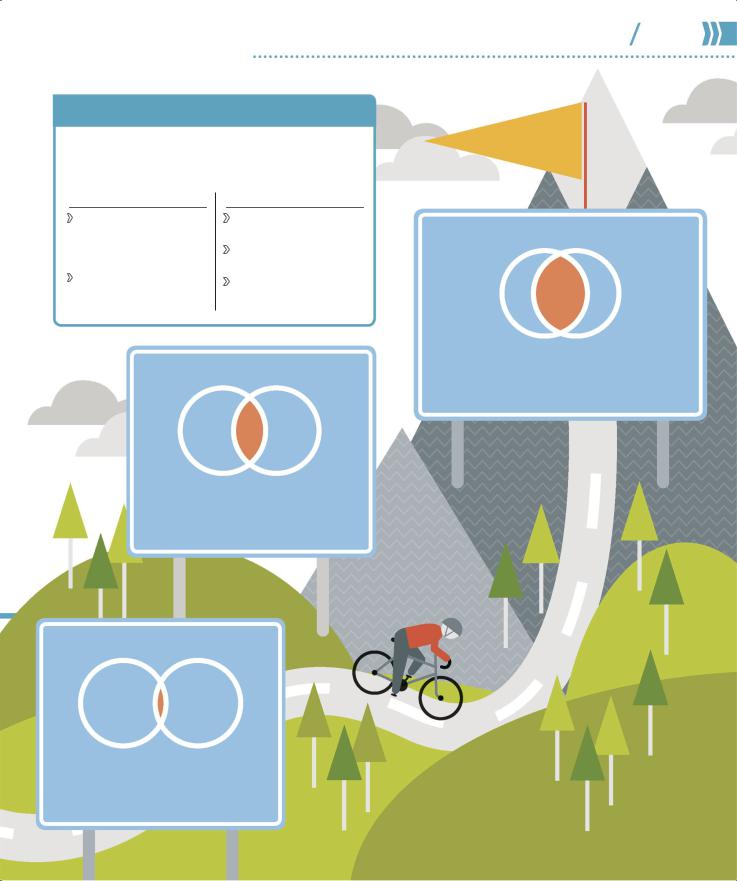
INDIVIDUAL OR GROUP?
Humanism is rooted in Western ideas of personal identity and achievement, sometimes called individualism. In contrast, collectivism subordinates the person to the group.
Individualism
Identity defined in terms of personal attributes— such as outgoing, kind, or generous
Own goals take priority over those of the group
Collectivism
Identity defined by which group someone belongs to
Family, then workplace, are most important groups
Goals of group take priority over individual’s
INCREASINGLY CONGRUENT
SELF- |
IDEAL |
IMAGE |
SELF |
With more common ground between self-image and ideal self, a person has greater self-worth and adopts a more positive frame of mind.
INCONGRUENT
SELF- |
IDEAL |
IMAGE |
SELF |
If there is little overlap between how a person sees themselves (self-image) and what they would like to be (ideal self), they feel unhappy, with low self-worth.
Humanism |
18 19 |
WHAT IS PSYCHOLOGY? |
|
SELF-ACTUALIZATION
SELF-ACTUALIZATION
SELF
When a person’s perception of who they are aligns with who they want to be, they achieve self-actualization. This satisfies their need to reach and express their full potential.
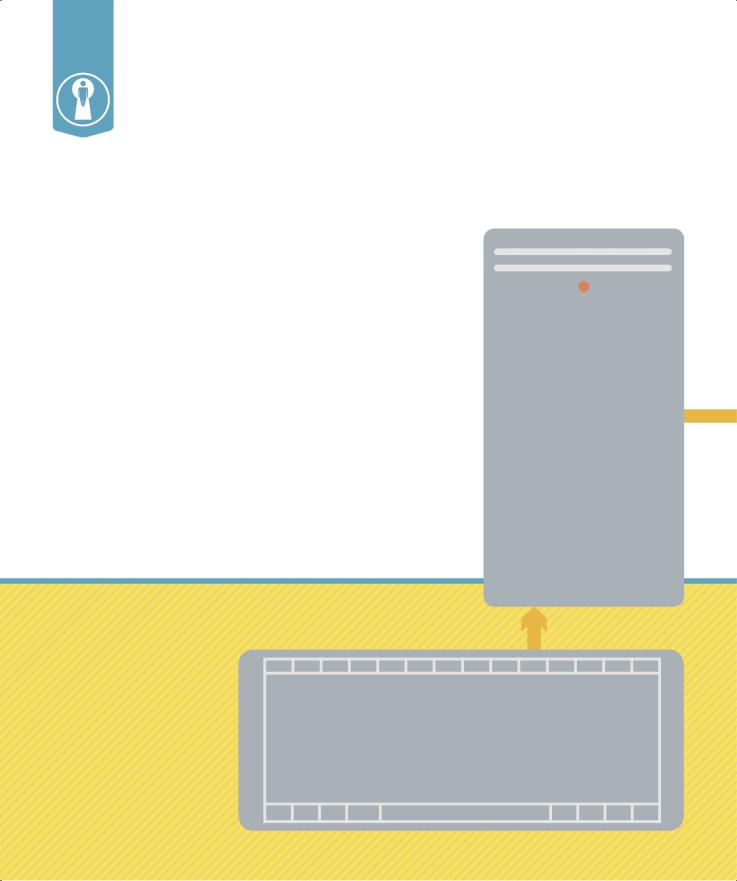
Cognitive psychology
A branch of psychology that considers the mind to be like a complex computer, the cognitive approach analyzes the way people process information and how that dictates their behavior and emotions.
What is it?
When the computer arrived in offices in the late 1950s, it sparked comparisons between artificial information processing and the operation of the human mind. Psychologists reasoned that in the same way that a computer accepts data, codes it for storage, and retrieves it, the human mind takes in information, changes it to make sense of it, stores it, and recalls it when needed. This computer analogy came to be the foundation for cognitive psychology.
The theories behind cognitive psychology can apply to virtually every aspect of daily life. Examples include the brain receiving and processing sensory information
to make a judgment (such as
recognizing that a carton of milk has soured from its bad smell); reasoning with logic to reach a decision (such as whether to buy an expensive shirt that may last longer than a cheap one); or learning how to play a musical instrument, which requires the brain to make new connections and store new memories.
Evaluation
Although cognitive psychology emphasizes internal processes, it aims to be strictly scientific, relying on laboratory experiments to back up any theory. What happens in controlled experiments, however, can be difficult to apply to real-life scenarios. Similarly, the assumption that the human mind functions like
PROCESSING
(mediational mental event)
After receiving information via the senses, the brain must sort through it to analyze it and decide what to do with it. Cognitive psychologists call this process mediational because it happens between (“mediates”) the environmental stimulus and the brain’s eventual response to that stimulus. In the case of a car breakdown, the brain might analyze the smell of burning rubber, and connect it with an earlier memory of a similar smell.
Information processing
Using evidence from controlled experiments, psychologists have built theoretical models of how the mind deals with information. According to these models, the human brain handles information in the same sequence a computer uses
to handle data—from input, through transformation of the data, to retrieval.
INPUT
(from environment)
A person’s sense organs detect stimuli from the external world and send messages to the brain as electrical impulses containing information. For example, if a person’s car breaks down, their brain focuses on warning signs, such as unexpected sounds from the engine, visual cues like smoke, or the smell of burning rubber.
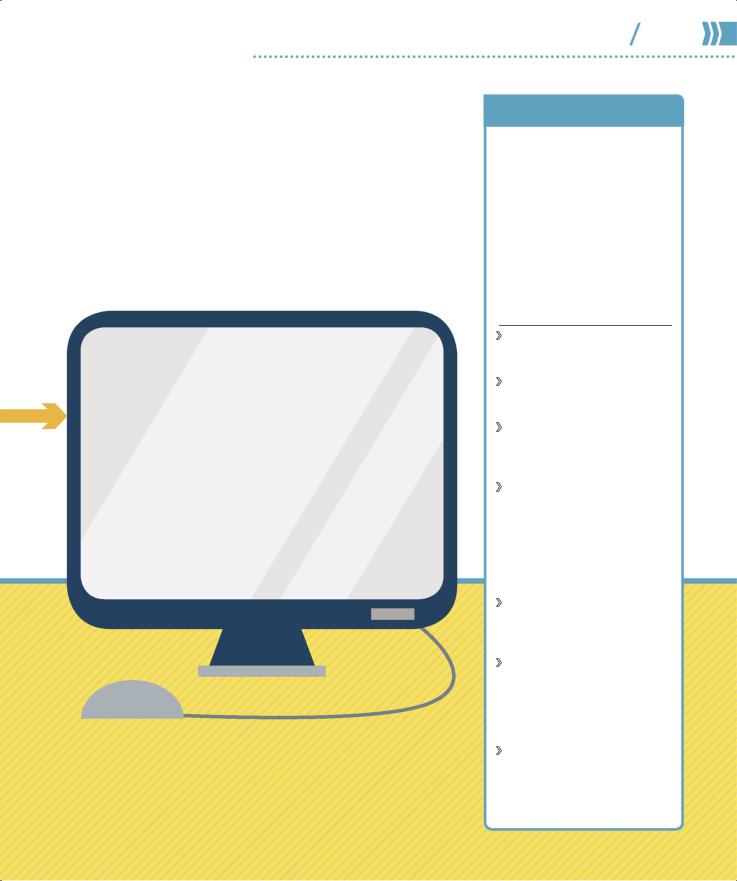
WHAT IS PSYCHOLOGY? |
20 21 |
Cognitive psychology |
a computer does not take into account realities such as people getting tired and emotional, and critics claim it treats humans as machines, reducing all behavior to a cognitive process such as committing things to memory. Critics have also pointed out that this approach ignores the roles of biology and genetics.
However, cognitive psychology has proved useful for treating
memory loss and selective attention disorders. It is also valuable in understanding child development, allowing educators to plan appropriate content for each age group, and to decide the best tools for delivering it. In the legal system, cognitive psychologists are regularly called on to assess eyewitness reports in order to determine whether a witness has accurately recalled a crime.
OUTPUT (behavior and emotion)
When the brain has retrieved enough information, it can make a decision about what response to make, in the form of either a behavioral or an emotional reaction. In the example of the car, the brain recalls memories of previous breakdowns, together with any relevant mechanical information stored, and then runs through a mental checklist of possible causes and solutions. It remembers that the smell of burning rubber previously indicated a broken fan belt. The person pulls over, turns off the ignition, and opens the hood to check.
“Disconnected facts in the mind are like unlinked pages on the
Web: they might as well not exist.”
COGNITIVE BIAS
When the mind makes an error in the course of thought processing, it results in a skewed judgment or reaction, known as a cognitive bias. This may be related to memory (poor recall, for example) or lack of attention, usually because the brain is making a mental shortcut under pressure. Biases are not always bad—some are the natural outcome of having to make a quick decision for survival purposes.
Examples of bias
Anchoring Placing too much importance on the first piece of information heard.
Base-rate fallacy Abandoning original assumptions in favor of a new piece of information.
Bandwagon effect Overriding own beliefs in order to go along with what other people are thinking or doing.
Gamblers’ fallacy Mistakenly believing that if something is happening more often now, it will happen less often in the future— for example, if the roulette wheel consistently falls on black, thinking it is bound to fall on red before long.
Hyperbolic discounting
Choosing a smaller reward now, rather than patiently waiting for a larger reward.
Neglect of probability
Disregarding true probability, for example, avoiding air travel for fear of a plane crash, but fearlessly driving a car even though it is statistically far more dangerous.
Status quo bias Making choices to keep a situation the same or alter it as little as possible, rather than risking change.
Steven Pinker, Canadian cognitive psychologist
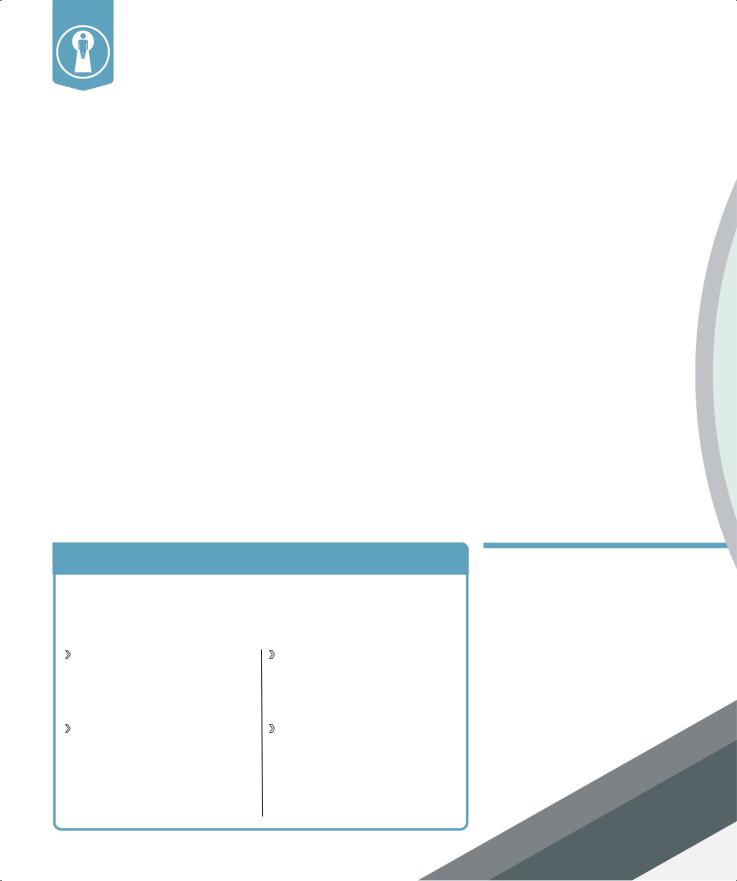
Biological psychology
Based on the premise that physical factors, such as genes, determine behavior, this approach can explain how twins brought up separately exhibit parallel behavior.
What is it?
Biological psychology assumes that people’s thoughts, feelings, and behavior all derive from their biology, which includes genetics as well as the chemical and electrical impulses that wire the brain to the nervous system. This assumption implies that the blueprint laid down in the womb—people’s physiological structure and DNA—dictates their personality and behavior
as they go through life.
Some of these ideas are based on the results of twin studies, which have shown that twins separated at birth and brought up in different households display remarkably similar behavior in adult life. Biopsychologists argue that this phenomenon can be explained only if the twins’ genetics influence them so strongly that not even the role of their parents, friends, life experiences, or environment have much impact.
An example of biological psychology in action is the research into how teenagers behave. Scans of teenage brains using imaging technology have revealed that adolescent brains process information in a different
way than adult brains. These differences help to offer a biological explanation for why teenagers can be impulsive, sometimes lack good judgment, and can become overly anxious in social situations.
Evaluation
Many of the ideas in biological psychology emphasize nature over nurture. As a result, critics consider the approach to be oversimplistic, giving undue weight to the influence of biology and built-in physical attributes. Little credit is given to the influence of events or people on an individual as they grow up. On the other hand, few argue with the rigorous scientific backbone of the approach, which places importance on the systematic testing and validation of ideas. And biopsychologists have enabled important medical advances—using research from neurosurgery and brain imaging scans, they have made positive contributions to treatment for patients with both physical and mental problems, including Parkinson’s disease, schizophrenia, depression, and drug abuse.
EVOLUTIONARY PSYCHOLOGY
Psychologists in this field explore why people’s behavior and personality develop differently. They investigate how individuals adapt their language, memory, consciousness, and other complex biological systems to best cope with the environment they find themselves in. Key ideas include:
Natural selection This has its origins in Charles Darwin’s
hypothesis that species adapt over time or evolve mechanisms that facilitate survival.
Psychological adaptations
This looks at mechanisms people use for language acquisition, for differentiating kin from non-kin, for detecting cheats, and for choosing a mate based on certain sexual or intelligence criteria.
Individual differences This seeks to explain the differences between people—for example, why some people are more materially successful than others.
Information processing This evolutionary view suggests that brain function and behavior have been molded by information taken in from the external environment, and so are the product of repeatedly occurring pressures or situations.
Different approaches
Biopsychologists are interested in how the body and biological processes shape behavior. Some focus on the broad issue of how physiology explains behavior, whereas others concentrate on specific areas such as the medical applications of the theory, or experiments to determine whether an individual’s genetics dictate their behavior.
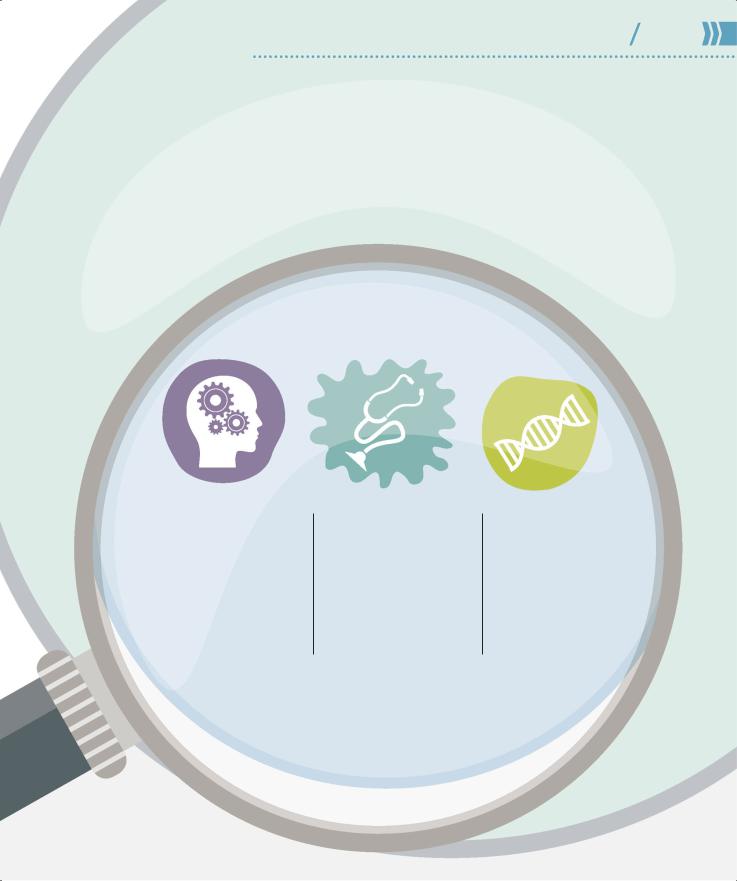
WHAT IS PSYCHOLOGY? |
22 23 |
Biological psychology |
“In the last analysis the entire field of psychology may reduce to biological electrochemistry.”
Sigmund Freud, Austrian neurologist
Physiological
This approach is based on the assumption that biology shapes behavior. It seeks to discover where certain types of behavior originate in the brain, how hormones and the nervous system operate, and why changes in these systems can alter behavior.
Medical
This branch explains and treats mental disorders in terms of physical illness.
Disorders are considered to have a biological basis, such as a chemical imbalance in the body or damage to the brain, rather than causes linked to environmental factors.
Genetics
This field attempts to explain behavior in terms of patterns that are laid down in each person’s DNA. Studies of twins (especially twins separated at birth and raised in different homes) have been used to show that traits such as IQ
are inherited.
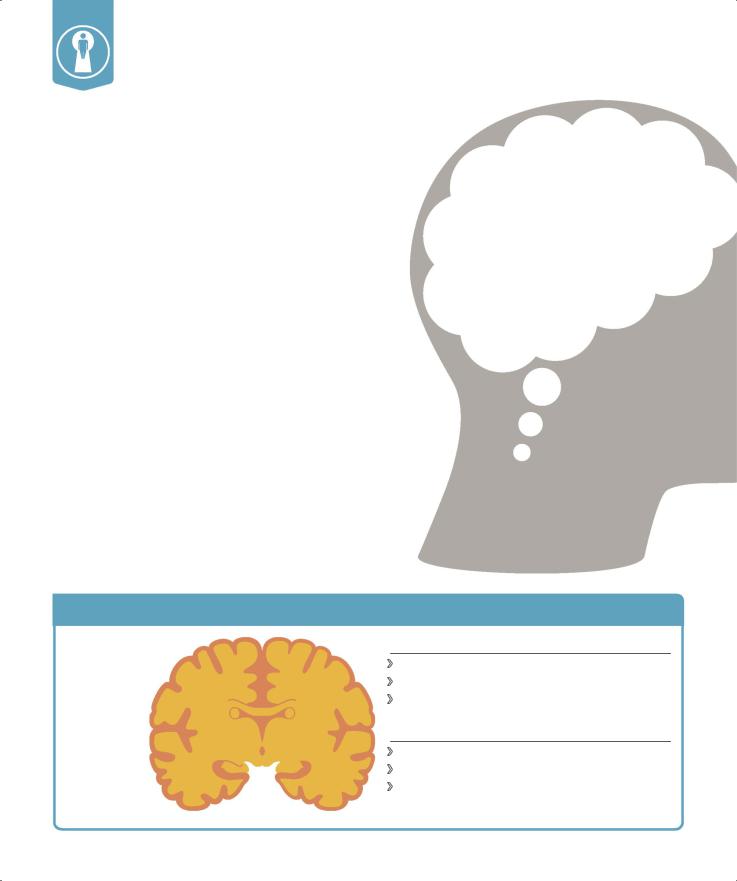
How the brain works
Studies of the brain have given valuable insight into the vital correlation between brain activity and human behavior, as well as revealing the complex process
by which the brain itself is brought to life.
Connecting brain and behavior
Understanding the biology of the brain and how it works became vital with the rise of neuroscience in the 20th century. Studies in this field confirmed that the brain itself is fundamentally intertwined with human behavior,
and prompted the emergence of specialist fields, such as neuropsychology. This relatively new branch of science combines cognitive psychology (the study of behavior and mental processes) with brain physiology, and examines how specific psychological processes relate to the brain’s physical structure. Investigating the brain in this light raises the age-old question of whether mind and body can be separated.
The relationship between brain and mind has been debated since the time of ancient Greece and Aristotle, when prevailing philosophical thought labeled the two entities as distinct. This theory, which René Descartes reiterated in the 17th century with his concept of dualism (right), permeated studies of the brain until well into the 20th century.
Modern neurological research and advances in technology have enabled scientists to trace certain behaviors to specific areas of the brain, and to study connections between the different regions. This has radically advanced knowledge of the brain and its effect on behavior, mental function, and disease.
Mind controlling brain
Dualism argues that the nonphysical mind and the physical brain exist as separate entities, but are able to interact. It considers that the mind controls the physical brain, but allows that the brain can at times influence the normally rational mind, for example, in a moment of rashness or passion.
SPECIALIZATION OF THE CEREBRAL HEMISPHERES
CEREBRAL |
|
|
|
CORTEX |
|
|
|
Nerve fibers cross |
|
|
|
over at the base |
|
|
|
of the brain, so |
Right |
Left |
|
each hemisphere |
|||
hemisphere |
hemisphere |
||
controls the |
|||
|
|
||
opposite side |
|
|
|
of the body. |
|
|
Front of
brain
Left hemisphere
This controls and coordinates the right side of the body.It is the analytical side of the brain.
It is responsible for tasks relating to logic, reasoning, decision-making, and speech and language.
Right hemisphere
This controls muscles on the left side of the body.It is the creative side of the brain.
It deals with sensory inputs, such as visual and auditory awareness, creative and artistic abilities, and spatial perception.
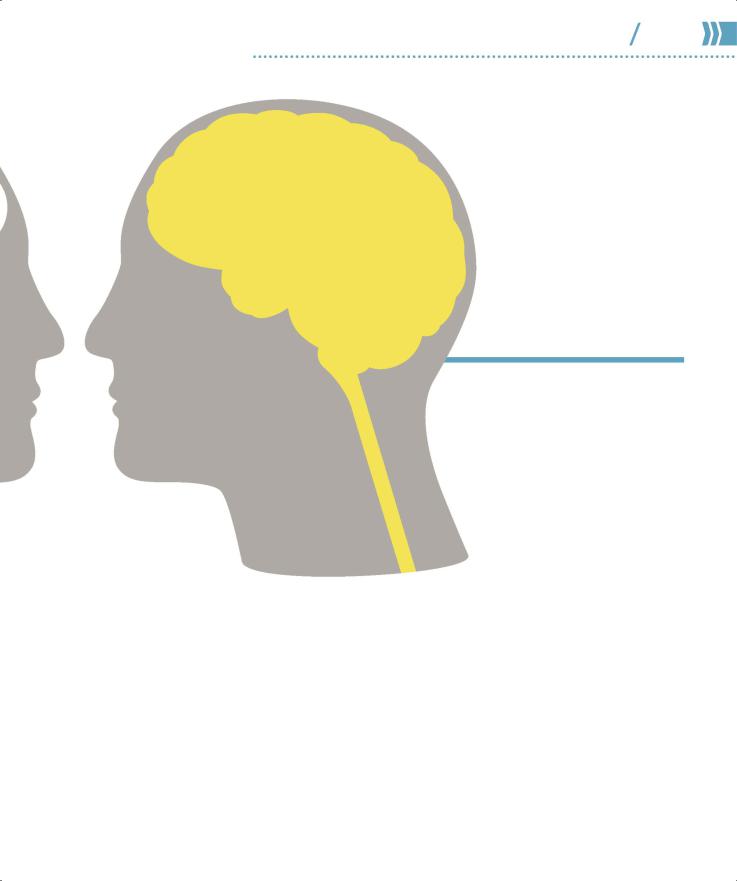
WHAT IS PSYCHOLOGY? |
24 25 |
How the brain works |
Brain controlling mind
Monoism recognizes every living thing as material, and that the “mind” is therefore purely a function of the physical brain.
All mental processes, even thoughts and emotions, correlate to precise physical
processes in the brain. Cases of brain damage reinforce this: minds alter when the physical brain is altered.
“I think, therefore
I am.”
René Descartes,
French philosopher
Mind-body dualism
Brain studies
Linking a behavior to a specific area of the brain first began with 19th-century studies of people with brain damage, as changes in behavior could be correlated directly to the site of injury. In one case, a worker survived injury to his frontal lobe, and the ensuing changes in his character suggested the formation of personality occurs in that area of the brain. The two linguistic functions of Broca’s and Wernicke’s areas (p.27) were named after the surgeons who dissected the brains of two patients who had linguistic problems when alive. Each brain showed malformations in a specific area, indicating where spoken language is generated (Broca’s area) and understood (Wernicke’s area). However, evidence of interconnections between
Humans are innately reluctant to reduce consciousness to pure biology. But the scientific evidence shows that the physical firing of neurons generates
our thoughts. Two schools of thought, monoism and dualism, dominate the question of whether the mind is part of the body, or the body part of the mind.
regions suggests certain functions may be linked to more than one area. Roger Sperry’s work in the 1960s on the cerebral hemispheres was a landmark in brain research. Studying patients whose hemispheres had been surgically divided, he found each side had specialized cognitive skills (left). He also realized that each hemisphere could be independently conscious.
However, all brain studies have limitations—they show correlations between brain activity and behavior, not absolutes. Surgical procedure on, or damage to, one part of the brain may affect other areas, which could account for observed behavioral changes. Equally, tests on brain-damaged patients offer no experimental control and can only observe behavior occurring after the damage.
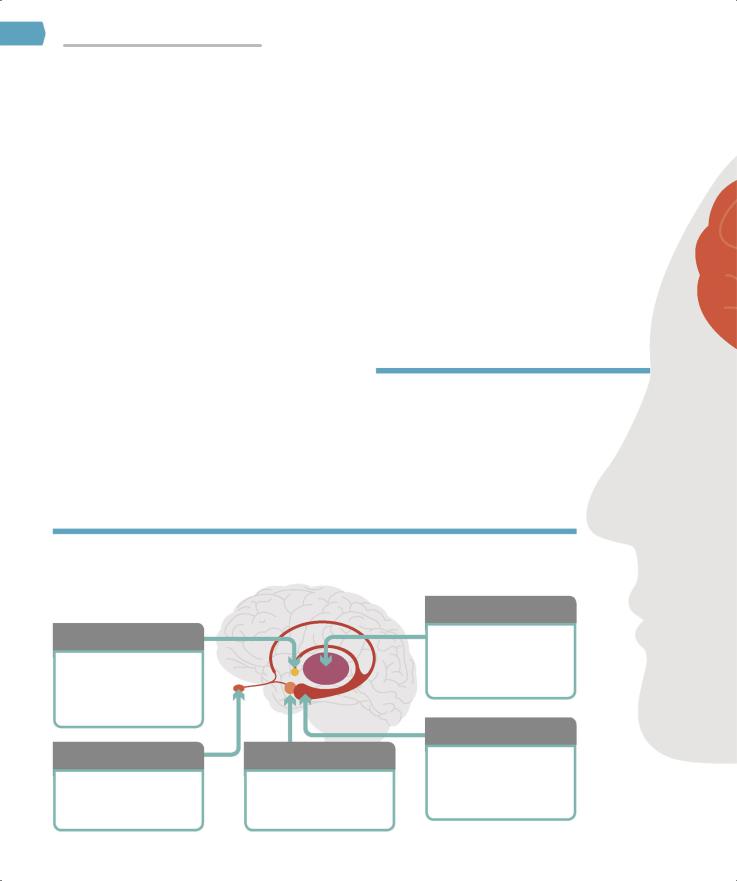
HOW THE BRAIN WORKS
Mapping the brain
One of the most complex systems in nature, the human brain controls and regulates all our mental processes and behaviors, both conscious and unconscious. It can be mapped according to its different neurological functions, each of which takes place in a specific area.
The hierarchy of mental processing is loosely reflected in the brain’s physical structure: high-level cognitive processes take place in the upper areas, while more basic functions occur lower down. The largest and uppermost region (the cerebral cortex)
is responsible for the highest-level cognitive function, including abstract thought and reasoning. It is the capacity of their cerebral cortex that separates humans from other mammals. The central limbic areas (below) control instinctive and emotional behavior, while structures lower in the brain stem maintain vital bodily functions, such as breathing.
Functional divisions
The cerebral cortex (also called the cerebrum) divides into two separate but connected hemispheres, left and right. Each one controls a different aspect of cognition (pp.24–25). Further divisions include four paired lobes (one pair on either hemisphere), each of which is associated with a specific type of brain function.
The frontal lobe is the seat of high-level cognitive processing and motor performance; the temporal lobe is involved in shortand long-term memories; the occipital lobe is associated with visual processes; and the parietal lobe deals with sensory skills.
Brain-imaging techniques, such as fMRI (functional magnetic resonance imaging), measure activity
in the different brain areas, yet their value to psychologists can be limited. Those studying fMRI results need to be aware, for example, of the issue of “reverse inference”: just because a particular part of the brain is shown to be active during
one cognitive process does not mean it is active because of that process. The active area might simply be monitoring a different area, which is in fact in control of the process.
Locating brain function
Psychologists and neurologists can map neurological function when small areas of the brain are stimulated. Using brainscanning techniques, such as fMRI or
CT, they study and record the sensation and movements this stimulation produces.
The limbic system
This complex set of structures is involved in processing emotional responses
and the formation of memories.
Hypothalamus
Involved in regulating body temperature and water levels and key behavioral responses.
Olfactory bulb |
Amygdala |
Relays messages about |
Processes emotions; |
smell to the central limbic |
affects learning and |
areas for processing. |
memory. |
Thalamus
Processes and sends data to higher brain areas.
Hippocampus
Converts short-term memories into long-term ones.
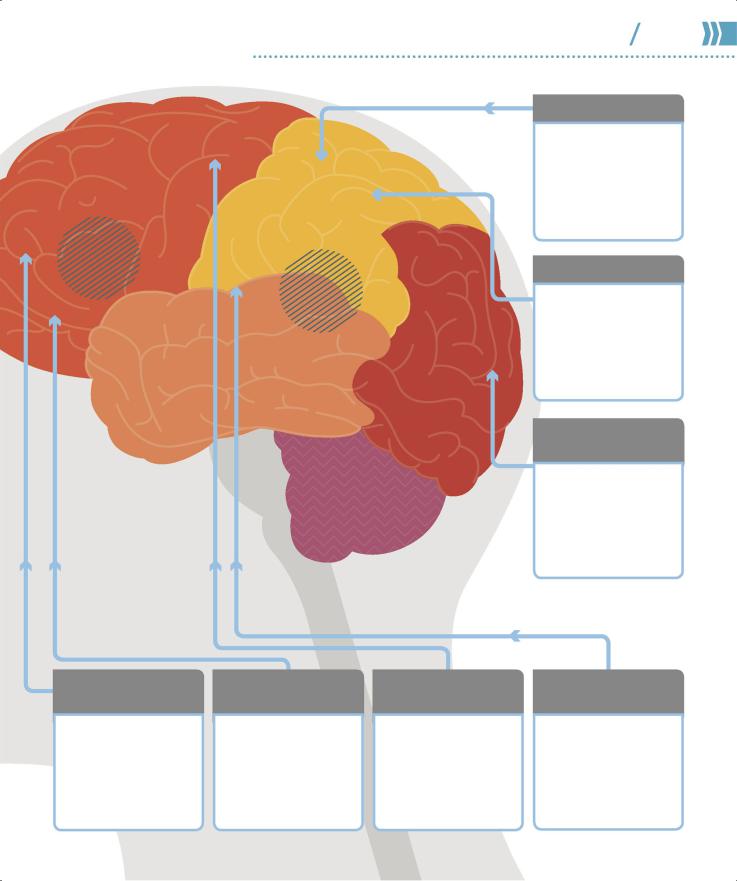
WHAT IS PSYCHOLOGY? |
26 27 |
How the brain works |
FRONTAL LOBE
Broca’s area |
|
|
Area in the left hemisphere; |
|
|
vital to the formation of |
PARIETAL |
|
articulated speech. |
||
LOBE |
||
|
TEMPORAL
LOBE
Wernicke’s area
Plays a key role in |
OCCIPITAL |
the comprehension |
LOBE |
of spoken language. |
|
Cerebellum
Involved in balance and posture; coordinates sensory input with muscle response.
Brain stem
Main control center for key bodily functions, such as swallowing or breathing.
Motor cortex
This is the primary area of the cerebral cortex involved in motor function. It controls voluntary muscle movements, including planning and execution.
Sensory cortex
Information gathered by all five senses is processed and interpreted here.
Sensory receptors from around the body send neural signals to
this cortex.
Primary visual cortex
Visual stimuli are initially processed in this cortex, enabling recognition of color, movement, and shape. It sends signals on to other visual cortices to be processed further.
Dorsolateral prefrontal cortex
This area is linked to various high-level mental processes, including “executive functions”— the processes involved in self-regulation or mental control.
OFC (orbital frontal cortex)
Part of the prefrontal cortex, the OFC connects with the sensory and limbic areas; it plays a role in the emotional and reward aspect of decision-making.
Supplementary motor cortex
One of the secondary motor cortices, this area is involved in planning and coordinating any complex movements. It sends information to the primary motor cortex.
Tempo-parietal junction
Located between the temporal and parietal lobes, this area processes signals from limbic and sensory areas, and has been linked with the comprehension of “self.”
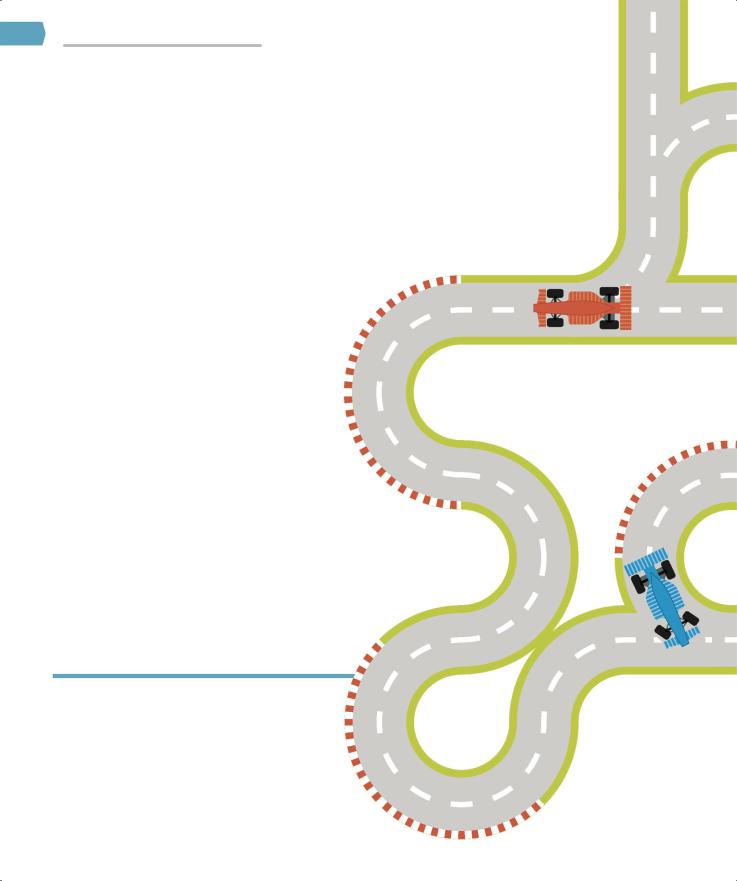
HOW THE BRAIN WORKS
Lighting up the brain
The human brain contains around 86 billion specialized nerve cells (neurons) that “fire” chemical and electrical impulses to allow communication between them and the rest of the body. Neurons are the core building blocks of the brain, and connect to form complex pathways through the brain and central nervous system.
Neurons separate at a narrow junction called a synapse. In order to pass a signal on, the neuron must first release biochemical substances, known as neurotransmitters, which fill the synapse and activate the neighboring cell. The impulse can then flow across the synapse in a process known as synaptic transmission. In this way the brain sends messages to the body to activate the muscles, and the sensory organs are able to send messages to the brain.
transmission indicate that pathways within this vast network link to specific mental functions. Every new thought or action creates a new brain connection, which strengthens if it is used repeatedly, and it is then more likely that the cells will communicate along that pathway in the future. The brain has “learned” the neural connections associated with that particular activity or mental function.
ACETYLCHOLINE
Acetylcholine
The effects of this neurotransmitter are mostly excitatory, and activate the skeletal muscles; it is also linked to memory, learning, and sleep.
Forming pathways
A neuron’s unique structure enables it to communicate with up to 10,000 other nerve cells, creating a complex, interconnected neural network that allows information to travel at great speed. Studies of synaptic
86billion neurons exist in the brain
Neurotransmitters
Many different types of neurotransmitters are released at a synapse, and may have either
an “excitatory” or an “inhibitory” effect on a target cell. Each type is linked with a specific brain function, such as regulating mood or appetite. Hormones have a similar effect but are transmitted by blood, whereas neurotransmitters are transmitted across the synaptic cleft.
GLUTAMATE
Glutamate
The most common neurotransmitter, glutamate has an excitatory effect and links to memory and learning.
